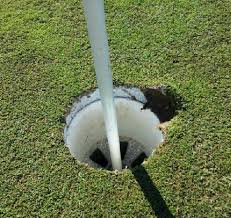What an exciting weekend at the PGA Championship at Bellerive Country Club in St. Louis! I think we can all agree that Tiger is back and Koepka is someone to be feared in majors.
As you may know, Brooks Koepka grew up in the Wellington/Palm Beach area and competed on our Florida Junior Tour for several years. Brooks was a very talented junior golfer, but wasn’t as dominating as some might imagine. He typically shot around par or better and finished in the top 5. He was recruited by several schools and decided to play at Florida State University with fellow FJT players Daniel Berger, Hank Lebioda, Michael Hebert, among others. Brooks’ younger brother Chase also played FSGA events and competed for University of South Florida just a few years ago.
 Back to the PGA…if you watched the PGA Championship television coverage you probably saw a hole, or two or three, get damaged by a ball making a pitch mark on the lip of the hole. At the highest level of competition, there are officials near each group that can easily radio to maintenance and someone can repair it in a reasonable time. On Sunday, Gary Woodland, playing along Tiger, hit his approach on the 12th hole and the ball made a pitch mark that damage the edge of the hole. Members of the maintenance staff were quickly on scene and used some fancy tools to repair the hole back to a perfect 4 ¼ inches in diameter. After play was delayed for nearly 10 minutes, play resumed and both Tiger and Gary made their birdie putts.
Back to the PGA…if you watched the PGA Championship television coverage you probably saw a hole, or two or three, get damaged by a ball making a pitch mark on the lip of the hole. At the highest level of competition, there are officials near each group that can easily radio to maintenance and someone can repair it in a reasonable time. On Sunday, Gary Woodland, playing along Tiger, hit his approach on the 12th hole and the ball made a pitch mark that damage the edge of the hole. Members of the maintenance staff were quickly on scene and used some fancy tools to repair the hole back to a perfect 4 ¼ inches in diameter. After play was delayed for nearly 10 minutes, play resumed and both Tiger and Gary made their birdie putts.
Now let’s talk about what players can do with a damaged hole in normal golf – that is, not having officials and maintenance staff readily at hand.
A hole can be damaged in various ways including a pitch mark made by a ball, jamming the flagstick back in and nicking the side, retrieving a ball in the hole with a putter, stepping on the hole, an animal, etc.
The hole is part of the player’s line of putt and the line of putt must not be touched (Rule 16-1a). There are seven exceptions when a player may touch their line of putt, but fixing a damaged hole is not one of them. However, if there is a ball mark on the lip of the hole a player may attempt to repair it.
Decision 16-1a/6 explains what procedure players should take:
If the damage is not clearly identifiable as a ball mark, then:
a) If the damage is such that the proper dimensions of the hole have NOT been changed materially (remember…4 ¼ inches in diameter), the player should continue play without repairing the hole. If he touches the hole in such circumstances, a breach of Rule 16-1a occurs (2 strokes or loss of hole in match play)
b) If the proper dimensions of the hole have been changed material, the player should request the Committee to have the hole repaired. If a member of the Committee is not readily available, the player may repair the damage without penalty.
Basically, try to get someone from the Committee, or club, to fix the hole, but if they are not available, go ahead and fix it. Be careful when trying to fix a damage hole as it is not easy. Chunks of the edge of the hole can easily fall off creating worse situation than you had before.





